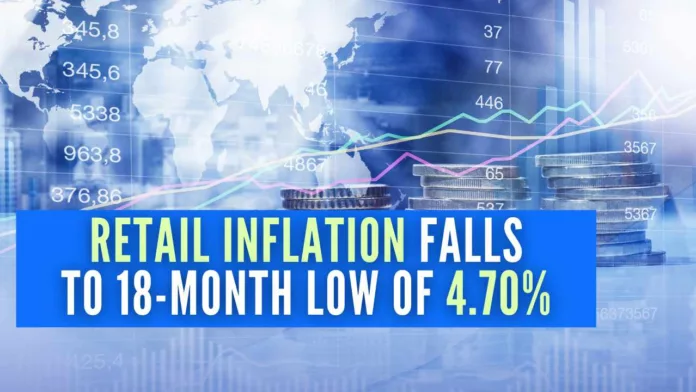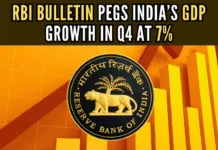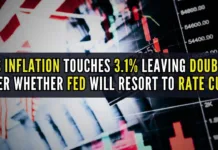
CPI-based inflation remains below RBI tolerance level for the second consecutive month
India’s retail inflation, which is measured by the consumer price index (CPI), fell to 4.70 percent in April 2023 as food prices came down. In March, it was 5.66 percent. Food inflation too slid to 3.84 percent in April from 4.79 percent in March.
This is the second consecutive month when CPI-based inflation has remained below the RBI’s tolerance level, which is between 2 percent to 6 percent.
According to the data released by the Ministry of Statistics and Program Implementation, retail inflation was at a high of 7.79 percent in April 2022, while food inflation was 8.31 percent during the period.
The index of industrial production (IIP), which shows the growth rates of different sectors, fell to 1.1 percent in March from 5.6 percent in February.
“The price data was collected from 1,114 urban markets and 1,181 villages,” the government said in a statement.
Aditi Nayar, Chief Economist, Head – Research & Outreach, ICRA Ltd., said: “The April 2023 CPI inflation eased to an 18-month low of 4.7 percent, benefitting from the high base as well as cooler than normal temperatures, which delayed the seasonal rise in prices of perishable items.”
She noted that April 2023 was marked by above-average rainfall and lower-than-normal temperatures, which helped keep some vegetable prices in check.
“Notwithstanding the mixed month-on-month trends across food items, the YoY CPI food inflation will likely remain subdued in May 2023 aided by the sustained high base (+ 8.0 percent in May 2022). With El Nino expected to materialize only in the second half of the monsoon season as per the IMD, kharif sowing may not be impacted. However, any subsequent deficiency in monsoon rainfall could affect kharif yields and winter sowing, and thereby food inflation, which poses a risk to the CPI inflation trajectory,” she said.
Nayar further said that although the impact of a favorable base effect related to the escalation of geopolitical conflict is likely to have peaked in April 2023, ICRA foresees the CPI inflation to remain range-bound at 4.7-5 percent in May and June 2023.
“With a dip in the CPI inflation below 5 percent and surprisingly subdued IIP growth, we foresee a high likelihood of a pause from the MPC at its next meeting. However, a pivot to rate cuts appears quite distant.
“The timeliness and intensity of the monsoon onset would be known when the MPC meets at its next scheduled meeting in June 2023, which would feed into whether its CPI inflation projection of 5.2 percent for FY2024 needs to be modified.
“We expect a rise in the supply of state government securities in May-June 2023, closer to the indicated amount, to prevent G-sec yields from easing meaningfully in the near term,” she added.
Further, on IIP, Nayar said: “Most of the available high-frequency indicators recorded a deterioration in their YoY performance in April 2023, relative to March 2023, partly on account of the unseasonal rainfall seen during the month. Accordingly, ICRA expects the YoY IIP growth to remain sub-2 percent in that month.”
[With Inputs from IANS]
PGurus is now on Telegram. Click here to join our channel and stay updated with all the latest news and views
For all the latest updates, download PGurus App.
- Reliance Industries becomes first Indian company to cross Rs.1 lakh crore threshold in pre-tax profits - April 23, 2024
- PM Modi extends wishes on Hanuman Janmotsav; shares video highlighting importance of Shri Hanuman - April 23, 2024
- EU announces multiple-entry Schengen visas for Indian nationals with longer validity - April 22, 2024










